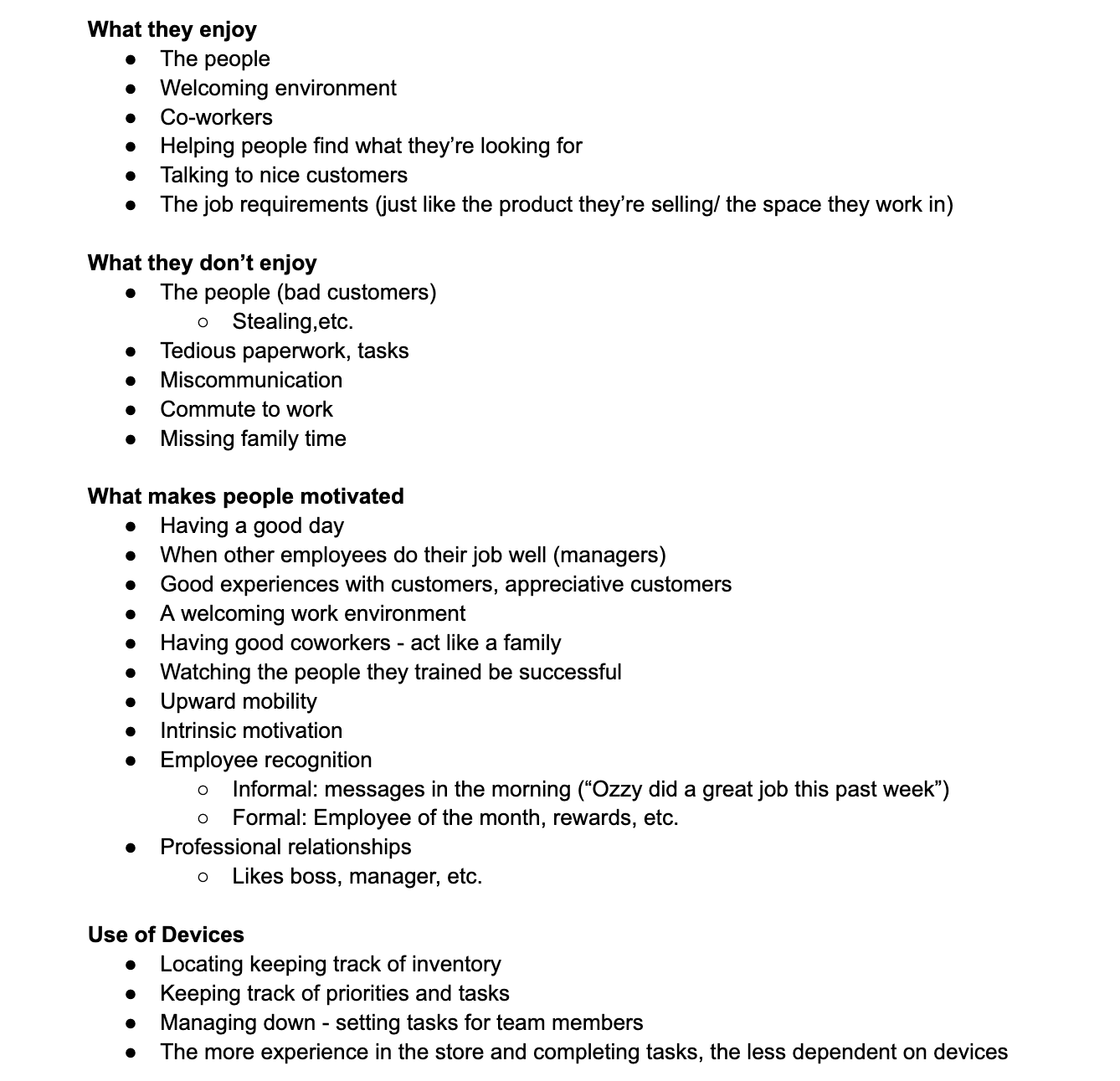Zebra Gamification
Overview
Zebra Technologies is a corporation that manufactures and develops smart computing products for a range of industries. Zebra’s product line includes mobile computers (that are comparable in size to smartphones), autonomous robots, and a vast selection of product accessories. Even further, each Zebra product is equipped with versatile software that creates opportunities to integrate applications in an adaptable, individualized, and need-dependent manner. Zebra primarily develops and distributes mobile computers to retail companies.
For my senior design course at Tufts University, I was selected to join a group and partner with Zebra to develop a gamification application for their tablets to incentivize strong work, improve retail workplace environment settings, and enhance creativity and friendly competition on a daily basis.
Over the course of the semester, my group conducted research about Zebra and gamification, surveyed and interviewed retail employees and gamification users, and developed and prototype a brand new gamification application for all Zebra mobile computer users. We worked with Zebra employees to develop this new tool that will help a wide range of employees. This project culminated in a 20 minute presentation to Zebra employees as well as fellow classmates and professors.
This project allowed me to culminate everything I had learned during my time as an Engineering Psychology student. I developed new skills that have enhanced how I understand Human Factors and Product Design.
Our final presentation can be seen here.
Roles:
Researcher
UI/UX Designer
Time:
12 Weeks
Methods:
User & Market Research
Surveys & Interviews
User Mapping
Sketching
Wireframing
User Testing
Prototyping
Tools:
Figma
Google Suite
iMovie
Background
Zebra's mobile computers are currently embedded within employee workflow for a wide range of companies in different industries. Existing employee-reward systems used by Zebra-partnered companies are less than satisfactory. Our project plan was to build out a software application for the mobile computer devices to gamify day-to-day and long-term employment tasks, improving the overall work experience.
Approach
Our group started this project by conducting research on Zebra, gamification, existing gamification platforms, and retail workplace environments. We wanted to get a better understanding of all these topics before developing our application to ensure efficiency and relatability. We completed our research through three methods: literature review, surveys, and interviews.
For the literature review, I led a comparative analysis of existing platforms to dig into features, interfaces, and services that support users. This research allowed our team to be further informed about how we should build our own software.
We distributed our surveys online and went into retail stores including CVS, Target, and local businesses in the Boston area to interview employees about their experience with handheld devices and gamification. Their responses informed us about the user needs we would need to consider and what features they would like to see. Click here to see the survey we had participants complete, and click here for our results.
See below for pictures of some of the comparative analysis, some of our interview results, and click here for a summary of all of our research results.
After completing our research, we developed personas, empathy maps, and a customer journey map to widen our understanding of the users of this product.
We developed three personas to represent three types of users for our product and developed their corresponding empathy map. We focused on one customer journey map that challenged us to think critically on how we could address their needs.
See below our personas, their empathy maps, and our customer journey map.
Once our research and user development was complete, we created initial sketches and wireframes of our design ideas. We started with low-fidelity paper sketches that focused on six screens we considered essential to our application: to-do list, coworker interaction, continual learning, customer interaction, rewards marketplace, and profile/settings.
These sketches quickly developed into combined wireframes to get the first digital representation of the application. These wireframes combined the ideas our group’s sketches to create a cohesive application.
After completing these wireframes, we developed our first mid-fidelity prototype in Figma to piece together our research and user identification.
See below our initial sketches, wireframes, and initial prototype.
We completed two rounds of user testing with our prototype that helped us revise and relook our application. For each round, we developed separate study materials to prepare us for this feedback and ensure we received all the information we needed. Click here to see our study materials from our first round, and click here to see our results from our second round.
Our feedback helped us decide more of our creative decisions, additional features to add, and other crucial considerations when creating our high-fidelity prototype. After the testing was complete, we created our final prototype. Click here to experience our final prototype.
See below for the high-fidelity home screen and a video walkthrough of the application.
Summary
Working with Zebra expanded my understanding of gamification, mobile design, retail workspaces, and the product development process. I learned more about how to consider user needs and desires while addressing workplace concerns. Furthermore, I was able to bring in personal gaming passions and fuse that creativity with my work.
Additionally, being part of this group project enhanced my skills as a team player and knowing how to communicate with others. As a team we kept each other accountable, supported each other, and understood where to help. These lessons have stuck with me and will guide me through my future projects.
If you would like to see more about the project, you can learn more at this website: Zebra Gamification
I hope you enjoyed learning about my Zebra gamification project. If you would like to hear more about this project, please do not hesitate to reach out to me!














